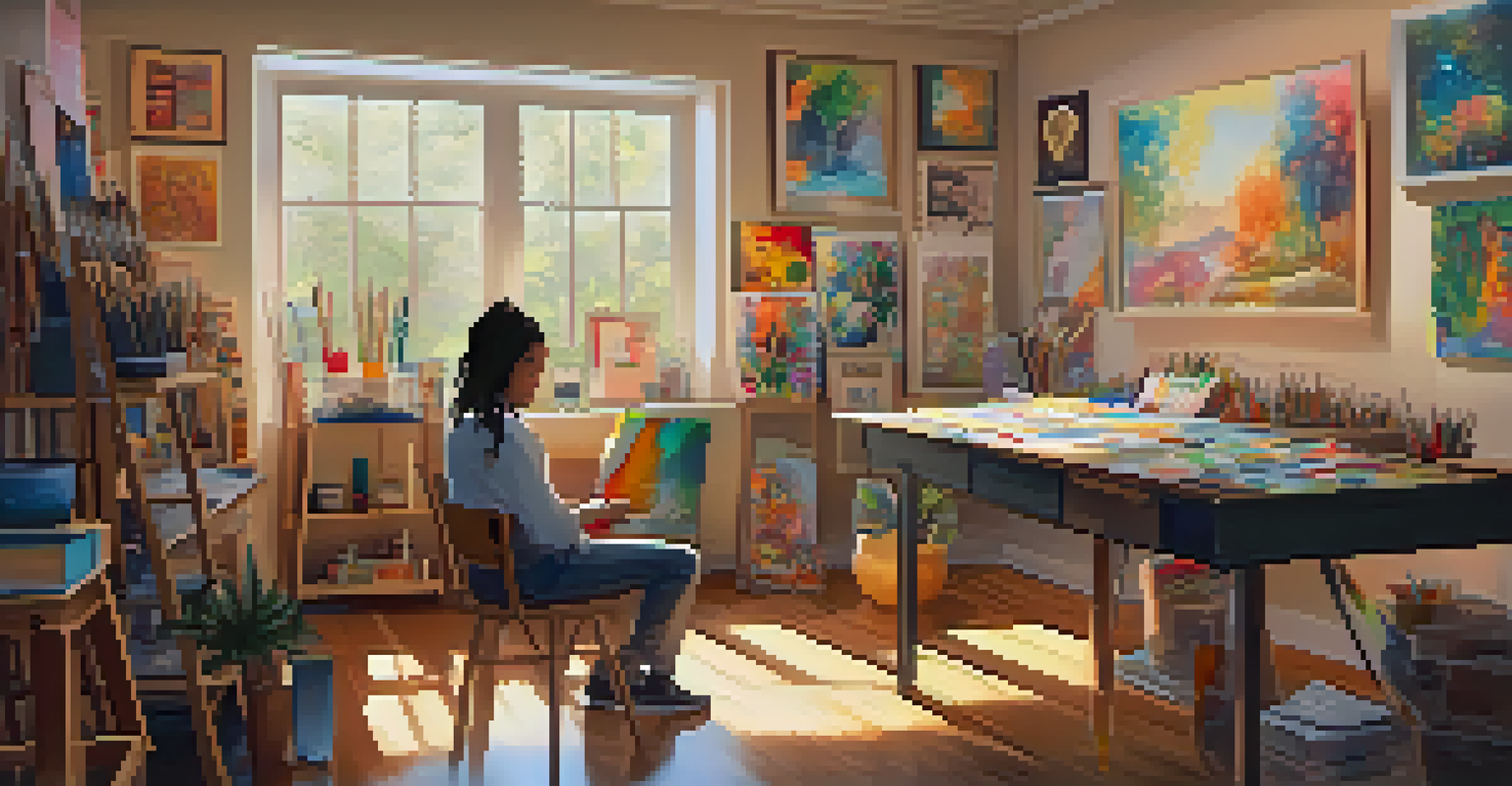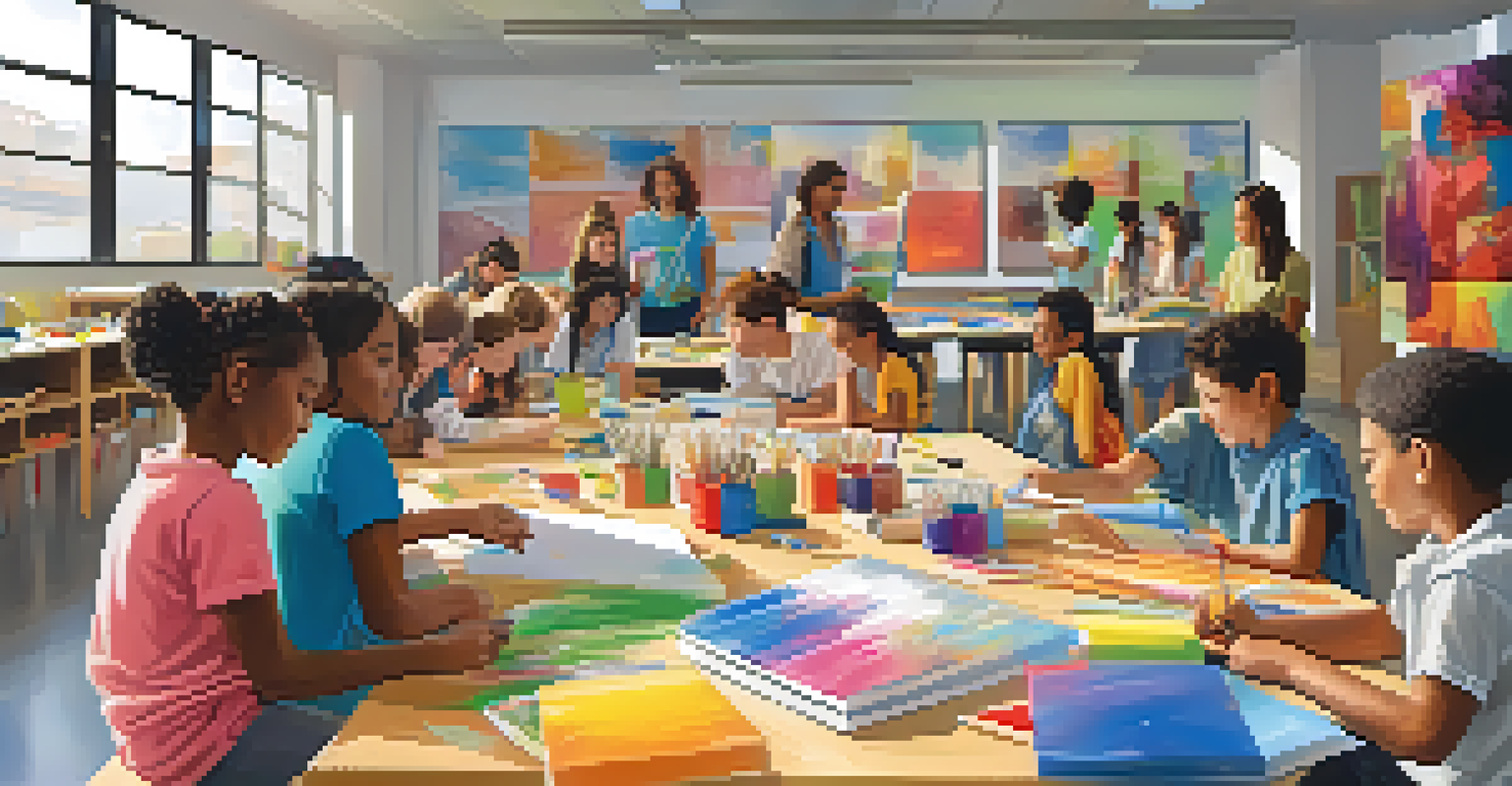The Role of Art in Supporting Mental Health Among Youth

Understanding the Importance of Mental Health in Youth
Mental health is a crucial aspect of overall well-being, particularly for youth. Adolescence is a time of significant change and development, making young people particularly vulnerable to mental health issues. As pressures from school, social media, and peer relationships mount, many young individuals struggle to navigate their emotions and experiences.
Art enables us to find ourselves and lose ourselves at the same time.
According to the World Health Organization, one in six young people aged 10-19 experiences a mental health condition. This staggering statistic highlights the need for effective support systems that can help them cope and thrive. Mental health challenges can affect academic performance, relationships, and overall quality of life, underscoring the importance of early intervention.
Addressing mental health in youth isn’t just a matter of providing treatment; it’s about creating an environment where young people feel safe and supported. Engaging with art can be a powerful tool in cultivating such an environment, offering a unique avenue for expression and healing.
Art as a Form of Self-Expression for Young People
Art provides a voice to those who may struggle to articulate their feelings. For many young people, traditional forms of communication can feel inadequate, but through painting, music, or writing, they can express their innermost thoughts and emotions. This act of creation can be incredibly liberating and therapeutic.

Consider a teenager who feels overwhelmed by anxiety. Instead of bottling up those emotions, they might find solace in creating a collage that represents their feelings. This creative process not only helps them channel their anxiety but also allows them to reflect on their experiences in a constructive way.
Mental Health's Impact on Youth
One in six young people faces mental health challenges, highlighting the need for supportive environments and early intervention.
By encouraging self-expression through art, we empower youth to explore their identities and emotions. This exploration can lead to greater self-awareness and foster resilience, helping them navigate the ups and downs of adolescence.
Building Community Through Collaborative Art Projects
Collaborative art projects can create a sense of belonging among young people. When they work together on a shared artistic endeavor, they not only develop their skills but also build relationships and foster community spirit. This connection can be especially vital for those who feel isolated or marginalized.
Creativity takes courage.
For instance, a community mural project can bring together youth from different backgrounds, allowing them to collaborate on a visual representation of their shared experiences. As they paint side by side, they build friendships and learn from one another, creating a supportive network.
These connections can be a lifeline for young people, offering them a sense of purpose and belonging during a time when they may feel lost or disconnected. The shared experience of creating art together can cultivate empathy and understanding, which are crucial for mental well-being.
The Therapeutic Benefits of Art for Mental Health
Art therapy is an established practice that harnesses the therapeutic potential of creative expression. It allows individuals to explore their emotions in a safe environment with the guidance of a trained therapist. For young people facing mental health challenges, this can be a transformative experience.
Through art therapy, youth can engage in activities like drawing, painting, or sculpting, which can help them process complex feelings and traumas. This form of therapy encourages them to express themselves without the pressure of traditional communication, leading to deeper emotional understanding.
Art as Emotional Expression
Engaging in art allows young individuals to express their emotions and experiences, fostering self-awareness and resilience.
Research has shown that art therapy can reduce symptoms of anxiety, depression, and stress in young individuals. By integrating creative practices into mental health support, we can provide youth with effective tools for coping and healing.
Art Education as a Tool for Emotional Development
Incorporating art education into school curricula can have profound effects on students' emotional development. When schools prioritize creative subjects, they provide students with opportunities to explore their feelings and develop critical thinking skills. This, in turn, can enhance their emotional intelligence.
For example, a classroom that integrates art into its lessons encourages students to think critically about their projects and express their ideas creatively. This process not only fosters artistic skills but also teaches them how to articulate their emotions and thoughts more effectively.
By nurturing creativity, schools can help students build resilience and adaptability, equipping them with important life skills that contribute to their overall mental health. An educational environment that values the arts is one that supports the holistic development of its students.
The Role of Technology in Art and Mental Health
In today’s digital age, technology offers new avenues for artistic expression and mental health support. Young people are increasingly using digital platforms to create and share their art, providing them with a sense of community and connection. This can be particularly beneficial for those who may not have access to traditional art resources.
Apps and online workshops allow youth to explore various artistic mediums, from digital painting to music production. This accessibility can encourage more young people to engage in creative practices, making art a more inclusive form of expression.
Community Through Collaborative Art
Collaborative art projects help build connections among youth, providing a sense of belonging and support during challenging times.
Moreover, online communities often provide emotional support and validation, which can be instrumental in improving mental health. By leveraging technology, we can enhance the impact of art on youth mental health in innovative ways.
Promoting Art Initiatives for Youth Mental Health Awareness
Raising awareness about the intersection of art and mental health is essential for fostering a supportive environment for youth. Communities, schools, and organizations can play a vital role by promoting art initiatives that highlight mental health issues and encourage creative expression. These initiatives can serve as powerful platforms for discussion and healing.
For example, hosting art exhibitions that focus on mental health themes can provide young artists a chance to share their stories while educating the public. These events can stimulate conversations, reduce stigma, and inspire others to seek help or get involved.

By prioritizing such initiatives, we can encourage a culture that values mental health and recognizes the importance of creative expression. This shift can empower young people to embrace art as a vital tool for their emotional well-being.